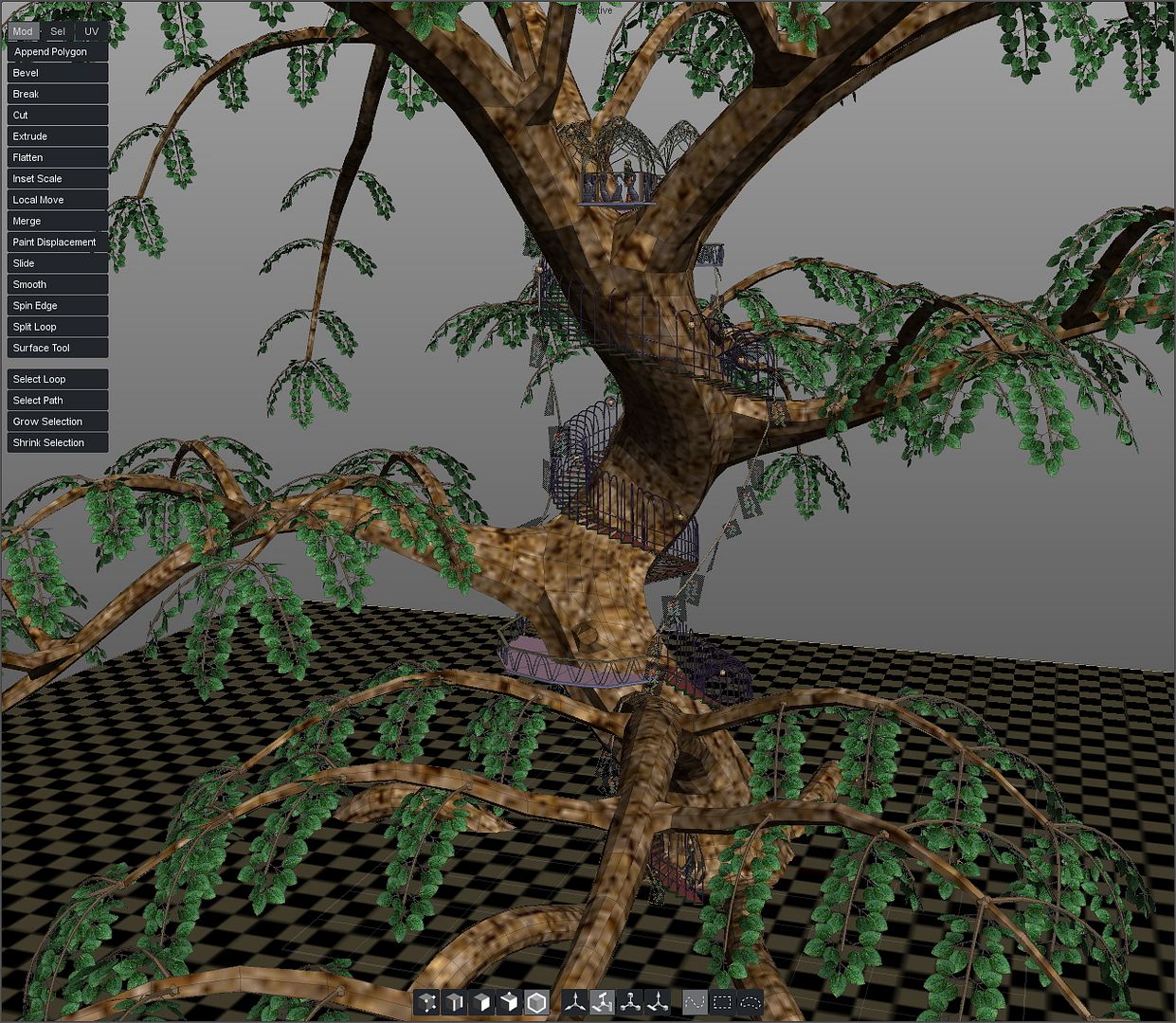Attached Link: knothole nap
If you want to apply the "hidden emitter" method to other things, here is the secret:
- The gently luminous lamp surface must be a discreet prop, separate from any lampstand/hanger parts. The glowing surface must be visible, not cast shadows, and not visible in raytracing. It can be opaque.
- The hidden emitter must also be a separate prop. It must be visible, not cast shadows, and it must be visible in raytracing. An ambient value of 20 for the emitter seems to work well in most situations. Increase the emitter's ambient value to cast more light.
- The rest of the model would generally be visible, cast shadows, and be visible in raytracing.
- Render with IDL engaged. More raytrace bounces will even out the lighting and fill deep shadowed areas better, but the render time cost increases asymptotically with more raytrace bounces.
Link shows the knothole of the same huge mulberry tree, used as a napping cubbyhole, with a single nightlight. ^^
This is a raw Silo modeler screen capture of the mulberry tree with its stairway...

Poser 12, in feet.
OSes: Win7Prox64, Win7Ultx64
Silo Pro 2.5.6 64bit, Vue Infinite 2014.7, Genetica 4.0 Studio, UV Mapper Pro, UV Layout Pro, PhotoImpact X3, GIF Animator 5

